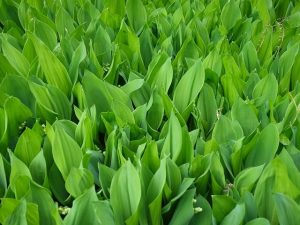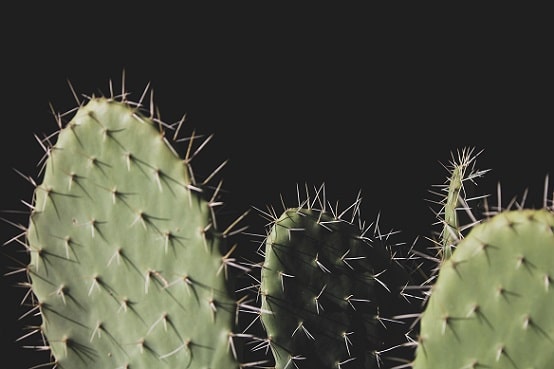The leaves are essential parts of the plants and are highly beneficial to humans, animals, and the ecosystem.
The prominent uses of the leaves are
- Oxygen production
- Remove carbon dioxide (other waste for plants)
- Decrease the surrounding temperature
- Food production
- Source of medicine
- Provide fiber
- For making utensils
- Home construction material
- To record history and other writings
- Tobacco products.
Introduction of Leaves
Leaves are delicate organs present on the upper parts of the plants exposed to the sun.
They are green in color due to the presence of a pigment named chlorophyll.
Unlike other parts of the plant, they are highly active.
This shows their active role in plant physiology. Both the formation of leaves and their shedding are also essential for the plant.
Leaves are tender, flat, and flexible in structure. They tend to get erect during the day and lie down and droop at night.
Just like many uses of plants, there are also many uses for leaves.
Uses of leaves in our life
1. Oxygen production
- Oxygen is vital for life. It reaches our body cells and tissues and generates energy from glucose.
- This energy helps us stay alive and perform all our work.

- Air has 21% oxygen. When all the animals breathe daily and release CO2, the oxygen ratio can go down, leading to suffocation.
- However, green leaves release oxygen during the process of photosynthesis. Thus, they help to maintain the proper oxygen ratio in the air.
2. Removes excess carbon dioxide from the air
- Besides the consumption of oxygen, we also leave out CO2 during expiration. This release is also added up when we burn wood or fossil fuels.
- This can drastically enhance the carbon dioxide levels in the air, which could be harmful to all the animals on the earth.
- Interestingly, plant leaves take in CO2 as a part of photosynthesis.
- During the process, they take up carbon dioxide and water to help form sugars like glucose in the presence of sunlight.
- Thus, they take up large volumes of CO2 from the air and help in bringing down its levels.
- Since CO2 is one of the greenhouse gases, its increase can enhance global warming. So plants, through leaves, can keep a check on carbon dioxide.
3. Decrease the temperature
- In general, the presence of green trees is considered necessary for low temperatures during summer.
- This is true as plants minimize greenhouse gas effects. However, the other mechanisms involved are through the leaves of the plants.
- Leaf pigments absorb light from the sun and store it in the form of chemical energy.
- Thus, the light reflected in space from plants is low.
- Also, leaves have large amounts of stomata that expel the water through the process called transpiration.
- This expulsion of water into the air also reduces the temperature.
Thus, leaves help to lower the atmospheric temperature around us.
4. Source of Food
- Leaves are involved in food production. They prepare sugar, which is stored in fruits, seeds, and tuber (potatoes) of plants.
- Also, some leaves become succulent and eatable. Many green leafy vegetables are rich in iron and can be used as part of our food.
- There are thousands of edible leaves which can be taken as a part of our diet.
- Hence, we can see leaves in all the ecosystems. Many insects and cattle depend on leaves for food.
Similarly, small fishes and big mammals like sea buffalo and whales depend on leaves for food in the marine ecosystem.
4. For Medicine
- Medicine is one of the important uses of the leaf.
- They are the biggest source of medicine from natural resources.
- Many leaves like Digitalis, vinca, and aloe are excellent sources of medicine.
| Leaf | Active ingredient | Medical Use |
|---|---|---|
| Digitalis | Digitoxin | In heart failure |
| Vinca | Vincristine | Cancer treatment |
| Aloe | Aloin | Anti-inflammatory, Anti-infective |
5. Commercial Tobacco
- Tobacco that is widely used in cigars and other smoking and chewing products is obtained from tobacco leaves.
6. Fiber
- Few leaves are the source of good quality fiber for manufacturing ropes and threads.
Examples of plants whose leaves are used for this purpose include
- hemp
- Henequen
- sisal
- abaca, etc.
These fibers are hard and coarse.
7. For making Dyes or colors
- Dyes are the coloring substances that impart appealing color to food items and medical formulations.
- They help to mask unpleasant colors and enhance the appeal of the substance.
- Leaves are also sources of colors and dyes. Unlike synthetic ones, these are obtained from nature, which is called eco-dyeing or eco-printing. Many leaves like
| Dye / Color | Leaf of plant |
|---|---|
| Green dye | Spinach, Chamomile |
| Orange dye | Eucalyptus, Sassafras |
| Yellow | Bay leaves, Celery leaves |
| Pink dye | Sumac leaves |
| Blue dye | Indigo plant leaves, Glastum leaves |
| Brown color dye | Amur maple, Fennel leaves, Comfrey |
| Dark-colored dye | Eucalyptus |
8. Small Utensils
- Though not large, leaves are traditionally used in making small utensils like cups and plates.
- They are nature-friendly, disposable, and also have no untoward effects on humans.
- Leaves are knitted into cups or plates and dried later in the sun to make them slightly harder.
Then, they are used for serving dishes, eating, drinking, etc.

Leaves used for producing utensils are
- Banana leaves,
- Palm leaves
- Areca etc.
9. Communication and records
- Modern man has books and software documents to store his data and records.
- But, in the past, before the availability of paper, palm leaves were used for writing scripts and other literature.

- They have been used for quite a long time in this manner in different parts of the world.
- They are said to have been used from the 5th century BC onward. These are called palm-leaf manuscripts.
Interestingly, these palm leaf records can be found without damage.
10. Home Construction
This is another prominent use of leaves by man.
- The large ones are especially used for house construction.
- These are specifically used for a rooftop, small huts, or even houses made of mud.
- They keep the house cool as they are bad conductors of heat.
- However, the roof is not as strong as the reinforced cement concrete. So they can be blown off by heavy winds.
- Further, they can catch fire, which is another risk.
Importance of Leaves in Plants
Leaves are essential for trees and plants, too. They not only help in food production, as mentioned before but also have other uses like
- Transpiration (heat management)
- Movement of sap from roots to the top of trees
- Protection from herbivores
- Storage for plant Survival (in a drought).
- Expulsion of waste material from the plant body.
For Transpiration
- This is a process of removal of water content from the trees.
- It helps to minimize the heat in the plant body.
- This transpiration occurs through the stomata present on green leaves.
- Stomata are the apertures present on the green surfaces of a plant.
- Since leaves have a number of stomata, maximal transpiration occurs through them.
- Moisture is sent out of the plant body during hot weather like summers in order to remove excess heat from the plant body.
Movement of sap
- Plants do not have a circulatory system from the movement of food and other matter in their bodies.
- For this, the movement occurs downward under the influence of gravity.
- It also occurs upwards due to transpiration.
- Since moisture is lost at the top of leaves, negative pressure is created in the trunk for the movement of sap from roots to the tip of trees.
- This way leaves help to maintain the upward movement of sap.
Protection from herbivores

- In the case of the plant surviving in the desert or extreme water scarcity, leaves are modified to have thorns.
- These thorns are pricky and prevent herbivore animals from grazing on them.
Storage of food and water
- Since water is scarce in deserts, desert plants have succulent leaves.
- When cut, they ooze out the sticky substance, which has water and other essential food materials needed by the plant.
- Due to this arrangement of reserving water in leaves, desert plants can survive for a long time.
Expulsion of waste material
- Plants also do not have separate excretory organs.
- Their waste is collected into dead plant cells and also leaves.
- Leaves are shed regularly, and new ones are formed in the plant.
- Plant, during their course of living, generates nitrogenous waste that is stored as alkaloids in the leaves.
- When leaves are shed off, this waste is removed from the plant.
See more facts about plants.
For Ecosystem
They maintain oxygen levels, decrease temperatures, and act as a source of food for other animals.
References
Leaves of tress are for medicine
Their fruit for food
Thanks
We, humans, need oxygen for our survival and in my opinion, more and more trees should be planted. This will not only increase the oxygen levels in the atmosphere but also help in tackling the global climate crisis problem. Apart from these, I can see there are many amazing uses of the leaves enlisted in this article.
lovely stuff , though better to use Human ( not Man )